The New Motorola Moto X (2nd Gen) Review
by Joshua Ho on September 17, 2014 9:00 AM EST- Posted in
- Smartphones
- Motorola
- Android
- Mobile
GPU Performance
As said in the previous section, we'll look at game-based benchmarks to get a better idea of how the Snapdragon 801's Adreno 330 GPU performs.
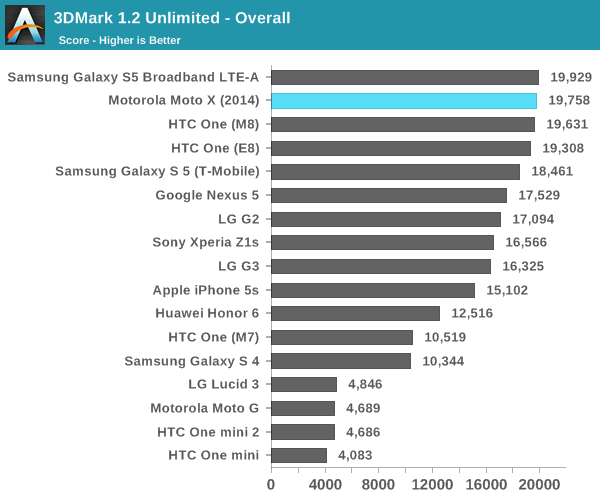
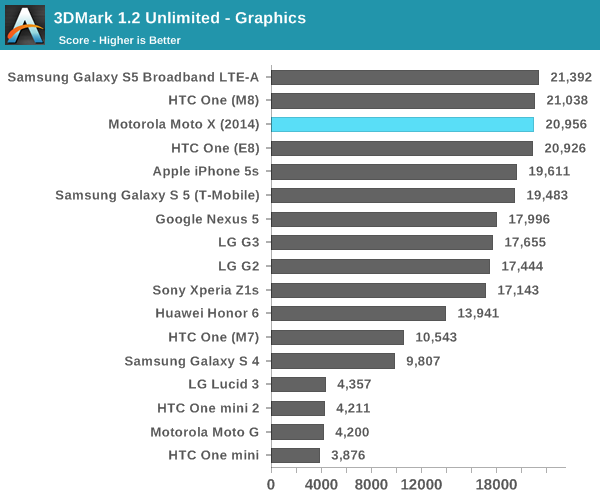
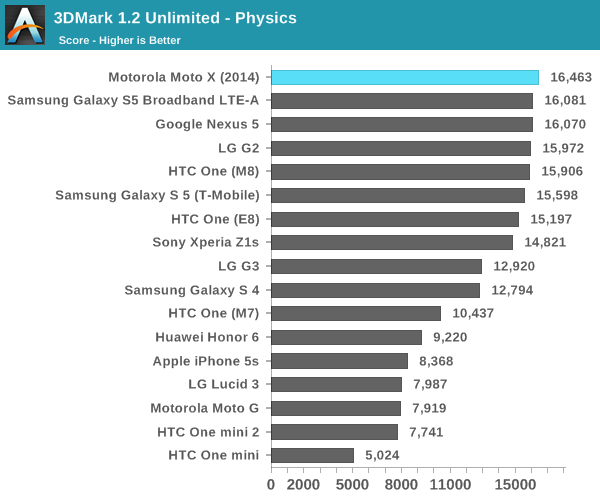
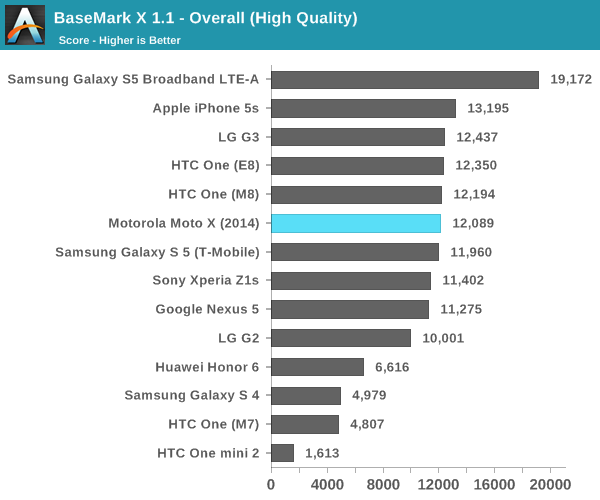
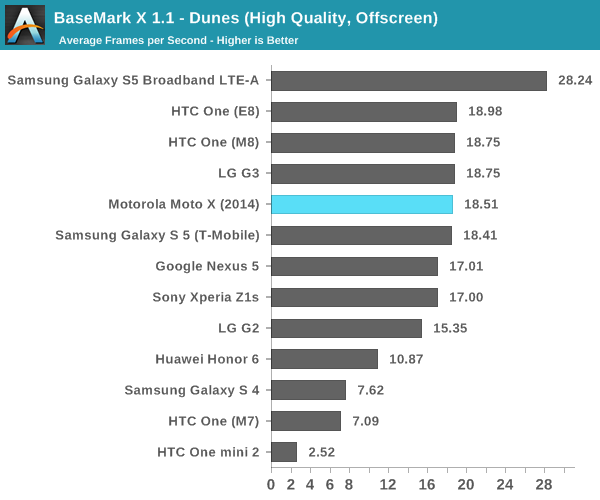
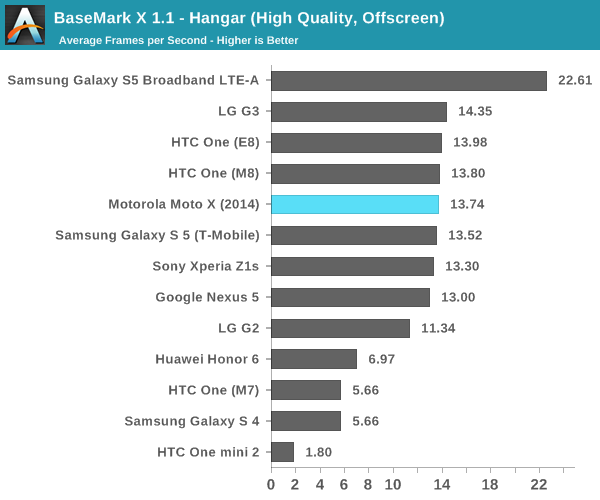
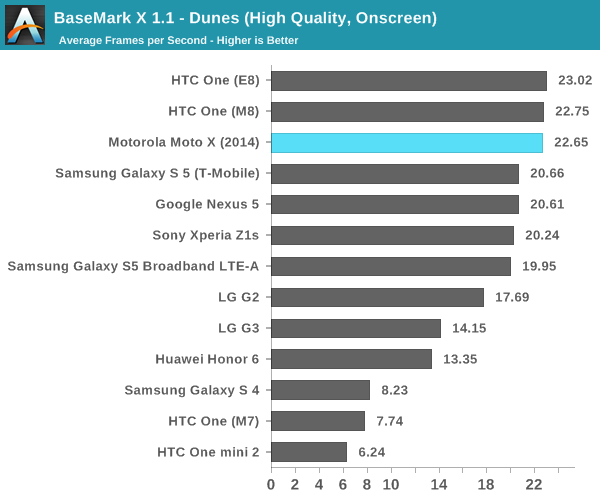
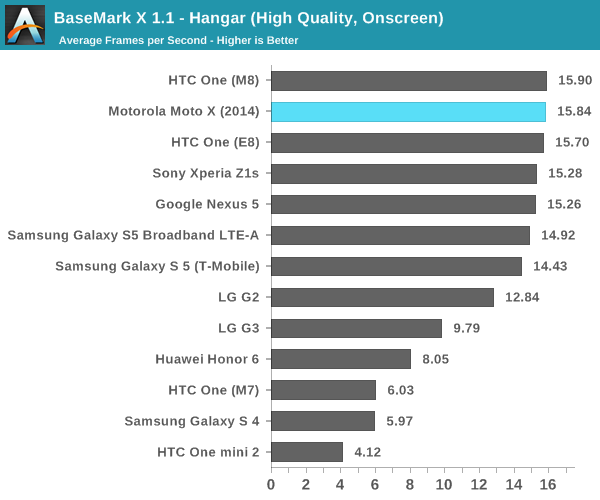
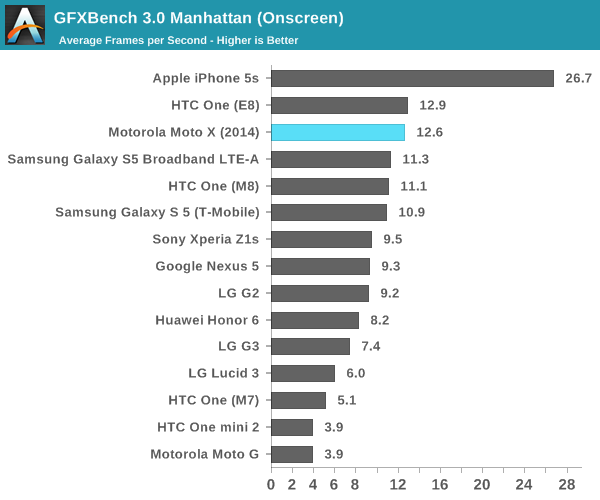
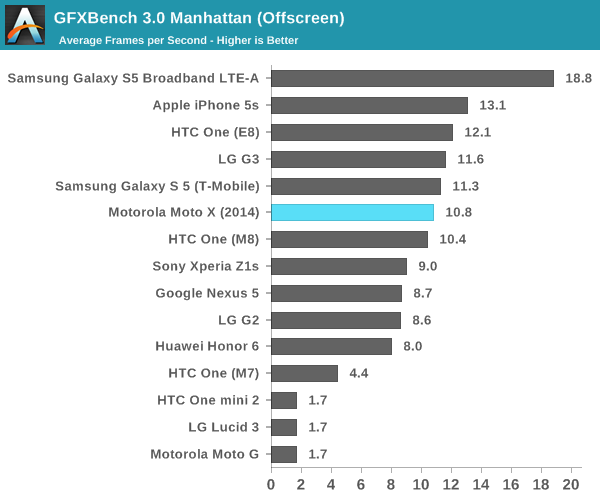
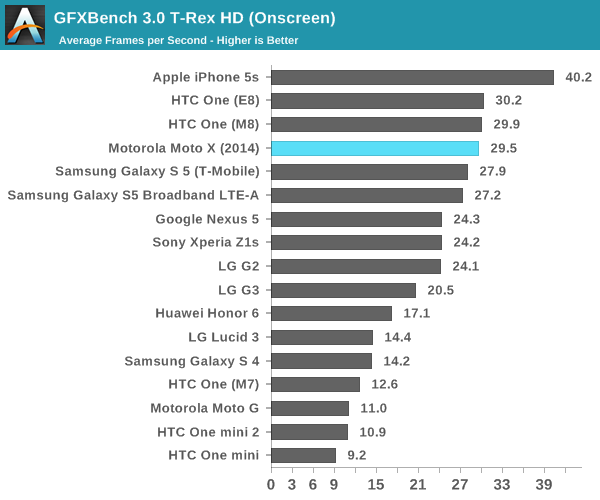

Once again, there are really no results that stand out. I suspect that the metal frame helps to prevent thermal throttling in short benchmarks, but in most scenarios this doesn't really play out and there's no real way to establish long term performance as the GFXBench rundown test doesn't complete properly.
NAND Performance
NAND performance has been an ongoing issue since we first illustrated how poor NAND could easily become a massive detriment to user experience. While sequential reads and writes are generally at a good level these days, it’s the random read and write tests that can be incredibly poor, and these are often a good indicator of overall UI performance as something like installing applications can make a device unusable if storage performance isn’t good enough. In order to test this, we turn to Androbench with a few custom settings to best represent performance.
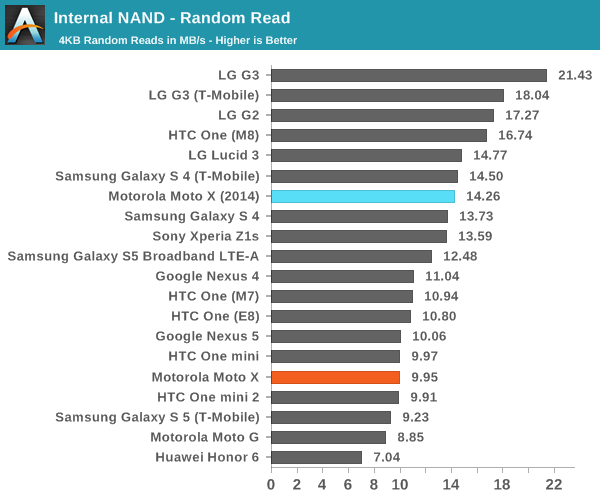
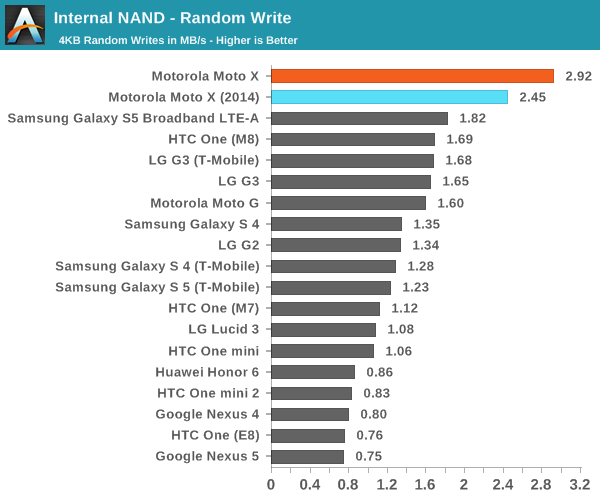
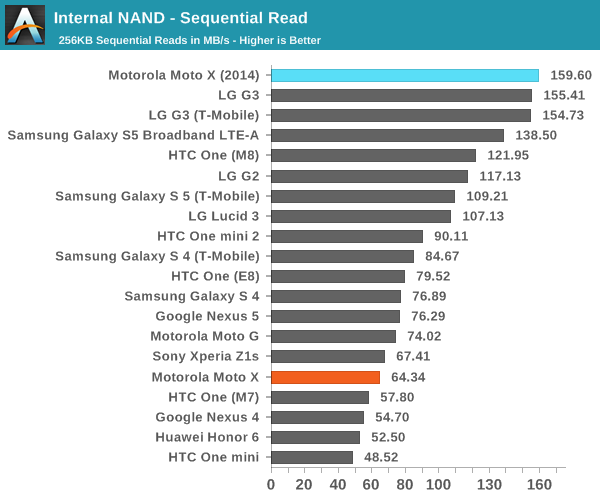

While the new Moto X doesn't quite top the previous Moto X in random write speeds, it's unlikely that the storage solution is worse. I found that the data and system partitions now use ext4, which means that the performance gains we saw with f2fs are gone. I'm not sure why Motorola decided to change back to ext4 given the performance gains that come with f2fs, but possible reasons include unforeseen conditions where f2fs could result in data loss compared to ext4 or difficulties in integrating f2fs support on Android. At any rate, the new Moto X is one of the best performers in this category, which should keep performance high after a year or two of use.










179 Comments
View All Comments
Alexvrb - Thursday, September 18, 2014 - link
Yeah the RAM and the CPU aren't that big of a deal to me, but if you're going to delete the mSD slot then your base model should be 32GB with a 64GB version as the upgrade.gg555 - Wednesday, September 24, 2014 - link
I agree. These days 16 Gb is a joke (which works out to more like 10 or 11 GB, once you account for the space the system takes up). These are multimedia devices. Once you start taking photos and video, downloading music and podcasts, doing some backups with Titanium or whatever, 16 GB really doesn't cut it. I struggle with this all the time on my Nexus 4.gg555 - Wednesday, September 24, 2014 - link
And they always want you to use the cloud as the solution to this problem. Seriously? Obviously they cannot possibly be ignorant about people having data caps on their plans. Not everyone can afford an unlimited plan. Or maybe this is just their way of colluding with the carriers to push people into more expensive plans. Anyway, the could is not a serious solution for a technology that has inherent network bandwidth issues.xaml - Saturday, September 27, 2014 - link
And security issues, which then reveal underlying issues with privacy, exhibitionism and respect. Not to mention the question of reliable access. And could it even be that data over radio is consuming more power than data over few or costly internal memory, respectively neglected external memory?erikiksaz - Tuesday, September 23, 2014 - link
Unlike Amazon, they're actually trying to make money off the hardware, hah. And I'm sure the cooling solutions for something of a tablet-sized form factor is much easier to tackle than on a smartphone.1080p on a 5.2 inch screen still results in a visible difference over 720p. 1440p, not so much.
bigstrudel - Thursday, September 18, 2014 - link
It's clearly the stock kernel which reduces battery runtimes on ALL nexus devices.julianocas - Thursday, September 18, 2014 - link
peGGi - Friday, September 19, 2014 - link
Kudos to Motorola for the impressive engineering that went into the metal-band-as-antenna. I like that about Motorola, that they put time and effort into things that users may not immediately notice, but should definitely improve the everyday quality of the experience of using a phone for its primary use - to make calls. But........ the metal band ruins the design, compared to X Gen 1, sadly. Screen-plate aside, the casing now seems to consist of 3 parts rather than 2. I loved the slopey, curviness of the first gen, and the way that the backplate curved round the sides, and met the front plate in the middle. That unity of design is gone now, and this second gen looks a bit awkward imo. The front and back of the phones don't match that well anymore. There was a lovely overall unity in aesthetic to the first Gen, which has been broken on the 2nd.
I also agree with the commenters that it is too big. Just like the S5, G3, and One M8 are all too big. For my very average sized male hands, the Gen One's ergonomics were perfect.
Sensors at the top on the front, especially on white model, look messy. Could they not all have been put behind one, long translucent black strip, along with the speaker grille, or something like that? Or tidied up a bit better?
I think Motorola would've been better sticking to the compact, ergonomically wonderful design of Gen 1, but with improvements to the internals (camera, SoC, colour accuracy, battery life). They'd have a great performing phone that fits better in the hand than all their rivals, for a lower cost than their rivals.
And then it would make sense to have a 5.5inch-ish size 'phablet' too, big screen, big tricks, etc. They'd be competing just above and just below the S5 and I'd say they'd rip chunks out of the market that way.
It looks like the Gen 1 is gonna go down as a classic, flawed and all as it was.
Harry_Wild - Friday, September 19, 2014 - link
I agree with your remark on the Moto X 2014! It much bigger then the Moto X which is great feeling and the right size for me small hands. But I am surprise Motorola went to a much larger size too! Motorola should of made the Moto X 2014 the same size; and they have the Moto G - 5" for anyone wanting a larger model. That would have been perfect decision. I going to the Apple store and looking at the 4.7" iPhone 6!dsouza - Friday, September 19, 2014 - link
@Harry_Wild, the new iPhone 6 (5.44 x 2.64in) is just marginally smaller than the Moto X 2014 (5.54 x 2.85)! So, if you believe that the new Moto X is too big for you, probably the new iPhone 6 will be so!